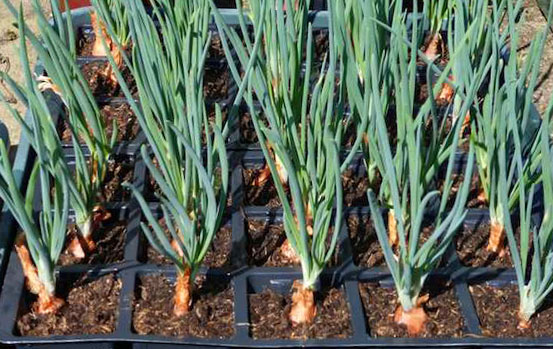The March Garden (USDA Zone 5a)
For those of you who, like us, are itching to get into their Northeast (Zone 5) gardens, it’s not too early. Unless, of course, your soil is muddy or wet. You never want to compress your soil by walking on it, which is why we place stones throughout the garden for walking or standing. Nor do you want to disrupt your soil by working the ground while the soil is still partially frozen.
Our soil guru is our good friend Lee Reich, the well-known author, garden columnist and self-described “avid farmdener (more than a gardener, less than a farmer.)” His blog, in case you aren’t familiar with it, is In Lee’s Garden Now. It’s worth subscribing to. Like Lee, we layer our compost, nutrients, mulch, and other amendments, taking care not to disturb the soil any more than is necessary.
Lee’s book, The Weedless Garden (Workman Publishing, 2001) lays out his soil management philosophy. While conventional wisdom says to garden from the bottom up, Lee believes this over-aerates the soil, leading to a gaggle of weeds that must be pulled. Weeds also needlessly waste nutrients. Like Mother Nature, Lee recommends gardening from the top down, layering undisturbed soil with chopped and composted leaves and other organic materials. He refers to this method as “weedless gardening” and we can attest that it works.
Weedless gardening encourages the presence of earthworms, reduces the amount of water needed, protects the soil, and helps to keep the seeds of unwanted weeds dormant. His four basic tenets are: minimize soil disruption, protect the soil’s surface, avoid soil compaction, and use drip irrigation. For all of these reasons, layering is key.
Starting Seeds
If you are in a U.S.D.A. horticultural zone other than Zone 5, be sure to check planting and maintenance schedules for your areas online. To get a jump on the growing season, many of your seeds should be started now if you have a sunroom or an empty corner to set up some plant-grow lighting and trays of soil. Because our garden is so large, our transplants are started for us in the organic greenhouse at Northern Dutchess Botanical Garden in Rhinebeck, New York, one of our all-time favorite garden nurseries. These include: broccoli, cucumber, fennel, peppers, squash, tomatoes, tomatillo, basil, parsley, and specialty flowers like giant Benary zinnias, calendula varieties, and Red Flame celosia. We’ll plant successive crops of cucumber, fennel, basil and parsley directly from seed during the season. If you are a newbie at starting seeds, a great blog that’s chock full of information is Margaret Roach’s A Way to Garden.
We started working in the Spiral House garden this week. Onion sets are great but there’s nothing like starting your own onions from seed to guarantee you will have certain varieties. Valencia and Red Cabernet are “keepers” that will overwinter well, storing for six months or more given the right temperature and humidity. We also like Walla Walla for their sweetness.
This week, we started some Valencia, Red Cabernet and Walla Walla along with scallions in our small greenhouse and will transplant them outdoors in late April. We should have done this a month ago, but it’s probably not too late. We also cut the grasses this week to ensure that none of the new growth is sheared when it starts pushing up out of the ground.
We do have some conventional white and red onion sets and they will be planted the first week in April along with a new batch of Jerusalem artichokes. Yeah, we know…Jerusalem artichokes, like mint, are supposed to go on forever, but most of ours mysteriously disappeared this year. Lucky for us, we found just enough in early winter — the perfect time to pick them in Zone 5a — for Chef Diane to make Roasted Artichokes and Fingerling Potatoes.
Our First Crop of Spinach
In addition to the onions and Jerusalem artichokes, the main job in the next week will be to rake and clean up any winter debris from our raised vegetable beds. And we’ll be sure to check on the spinach we overwintered. Several years ago, we mistakenly left a fall crop of Bloomsdale spinach (our favorite variety) in the garden and, when spring arrived, we pulled off the yellowed leaves and waited to see what would happen. Within two weeks, we had the most delicious spinach crop of the entire season and have been doing this ever since. We’ll probably also plant some new spinach along with kale and collards. A little frost will just make them sweeter and we can always blanket these plants with some row cover if it gets too cold.
Next on the list will be the flower beds, removing debris and cutting down the grasses so we don’t lose any of the new growth by trimming too late. Start with the ornamental beds that will bloom first, like those cradling your spring bulbs. Cut back dead foliage on perennials to allow for new growth. Add your amendments like compost and any organic fertilizers you use. We like to spread a thin layer of Moo Doo Composted Cow Manure over the flower gardens in both the fall and spring.
It’s also time to start pruning shrubs and trees to allow light in and guarantee air flow. Late winter and early spring are the prime times for pruning because the leaves are gone and most woody plants are dormant. Pay special notice to limbs that are crossing one another. The goal is to create strong limbs, prevent pests and disease, and guarantee healthy fruit and blooms. Another staple in our garden library at the Spiral House is Lee’s The Pruning Book (Taunton Press, 2010). We’ll be referring to it often.
Enjoy the garden. Daylight Savings Time arrives this year on March 12.
